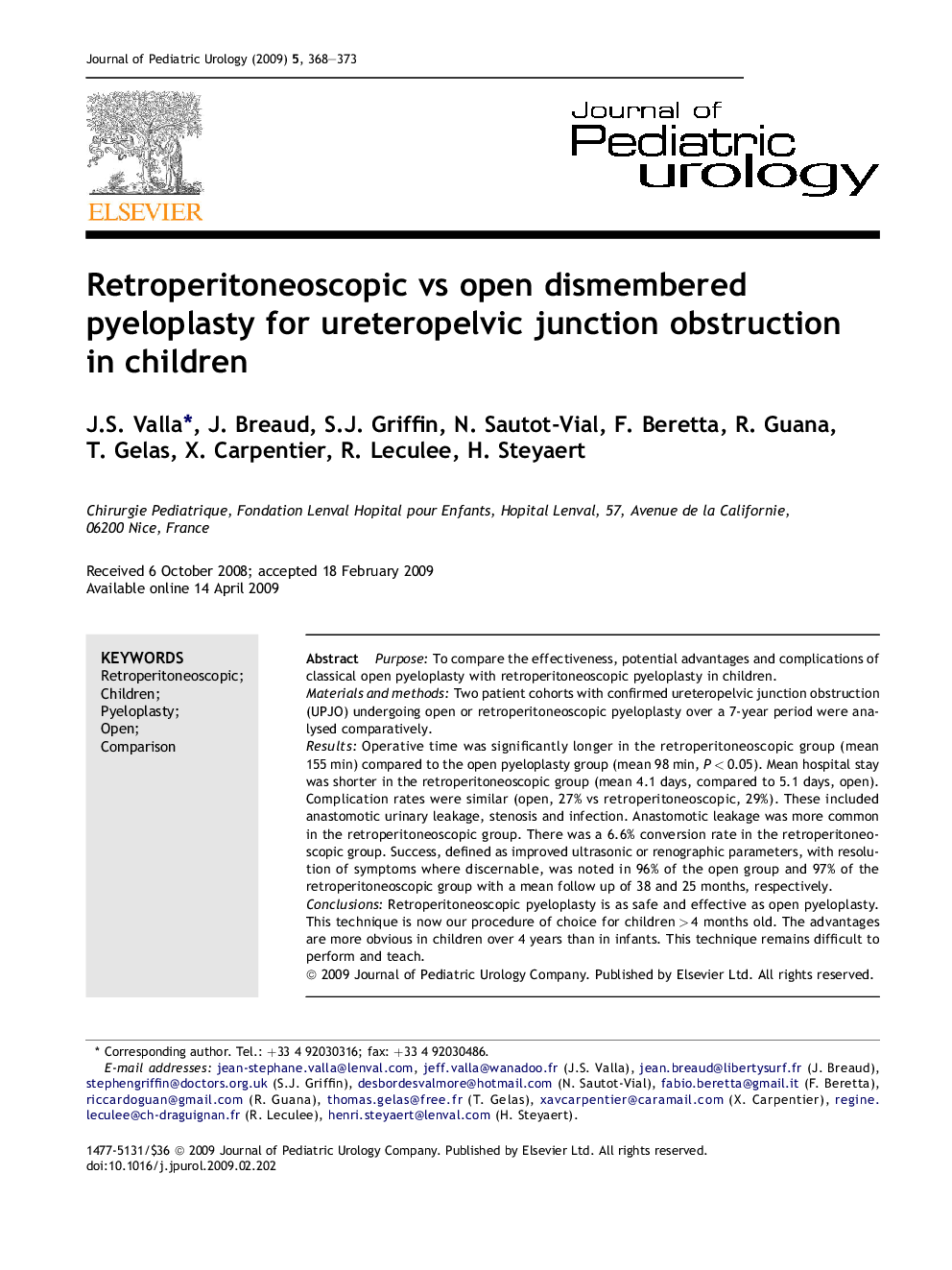| Article ID | Journal | Published Year | Pages | File Type |
|---|---|---|---|---|
| 4163039 | Journal of Pediatric Urology | 2009 | 6 Pages |
PurposeTo compare the effectiveness, potential advantages and complications of classical open pyeloplasty with retroperitoneoscopic pyeloplasty in children.Materials and methodsTwo patient cohorts with confirmed ureteropelvic junction obstruction (UPJO) undergoing open or retroperitoneoscopic pyeloplasty over a 7-year period were analysed comparatively.ResultsOperative time was significantly longer in the retroperitoneoscopic group (mean 155 min) compared to the open pyeloplasty group (mean 98 min, P < 0.05). Mean hospital stay was shorter in the retroperitoneoscopic group (mean 4.1 days, compared to 5.1 days, open). Complication rates were similar (open, 27% vs retroperitoneoscopic, 29%). These included anastomotic urinary leakage, stenosis and infection. Anastomotic leakage was more common in the retroperitoneoscopic group. There was a 6.6% conversion rate in the retroperitoneoscopic group. Success, defined as improved ultrasonic or renographic parameters, with resolution of symptoms where discernable, was noted in 96% of the open group and 97% of the retroperitoneoscopic group with a mean follow up of 38 and 25 months, respectively.ConclusionsRetroperitoneoscopic pyeloplasty is as safe and effective as open pyeloplasty. This technique is now our procedure of choice for children > 4 months old. The advantages are more obvious in children over 4 years than in infants. This technique remains difficult to perform and teach.
